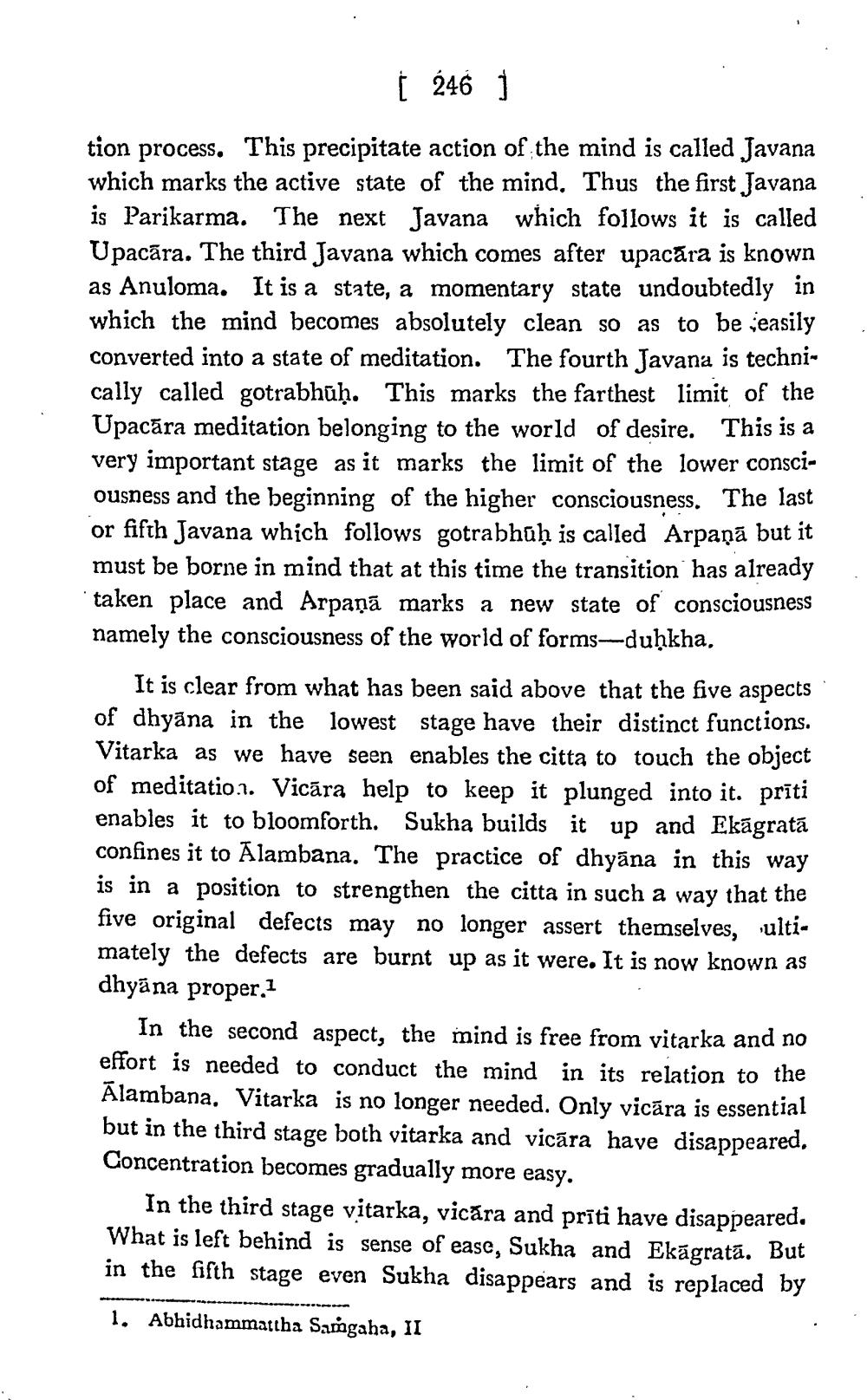________________
[ 246 )
tion process. This precipitate action of the mind is called Javana which marks the active state of the mind. Thus the first Javana is Parikarma. The next Javana which follows it is called Upacāra. The third Javana which comes after upacara is known as Anuloma. It is a state, a momentary state undoubtedly in which the mind becomes absolutely clean so as to be easily converted into a state of meditation. The fourth Javana is technically called gotrabhūḥ. This marks the farthest limit of the Upacāra meditation belonging to the world of desire. This is a very important stage as it marks the limit of the lower consciousness and the beginning of the higher consciousness. The last or fifth Javana which follows gotrabhūḥ is called Arpaņā but it must be borne in mind that at this time the transition has already taken place and Arpaņā marks a new state of consciousness namely the consciousness of the world of forms-duḥkha.
It is clear from what has been said above that the five aspects of dhyāna in the lowest stage have their distinct functions. Vitarka as we have seen enables the citta to touch the object of meditatio.1. Vicāra help to keep it plunged into it. prīti enables it to bloomforth. Sukha builds it up and Ekāgratā confines it to Alambana. The practice of dhyāna in this way is in a position to strengthen the citta in such a way that the five original defects may no longer assert themselves, ultimately the defects are burnt up as it were. It is now known as dhyāna proper.1
In the second aspect, the mind is free from vitarka and no effort is needed to conduct the mind in its relation to the Alambana. Vitarka is no longer needed. Only vicāra is essential but in the third stage both vitarka and vicāra haye disappeared, Concentration becomes gradually more easy.
In the third stage vitarka, vicăra and prīti have disappeared. What is left behind is sense of ease, Sukha and Ekágratā. But in the fifth stage even Sukha disappears and is replaced by 1. Abhidhammattha Samgaha, II




